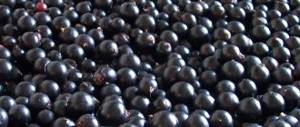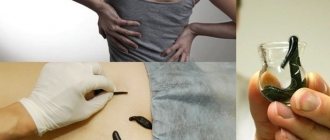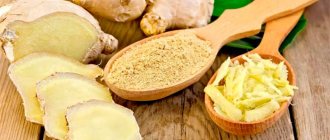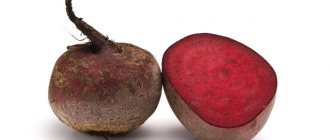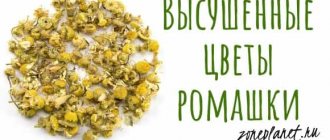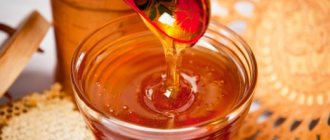Hello my dear friends. My journey into the world of traditional medicine began about 10 years ago, and during this time I became convinced of the effectiveness of herbal treatment, which led me to give up pharmaceutical drugs. Most recently, my attention was attracted by ginger root, its benefits, harm, and what else interested me, I will tell you in this article. After what you find out, I’m sure this plant will also be a regular guest on your table. I hope this information will help you make the right choice, and you will no longer spend a lot of money on expensive medications that cause irreparable complications to the body.
Properties of ginger and effects on the body
Ginger is a spicy plant native to tropical India. Here, for the first time, the unusual taste and aromatic properties of its rhizome were discovered, and medicinal effects were also noticed. In ancient Indian and ancient Chinese medical literature, separate sections are devoted to ginger with descriptions, recipes and areas of application. Today this plant has been studied much more, but how ginger affects the kidneys will depend only on the individual characteristics of the body.
The most pronounced properties of the root include:
- anti-inflammatory;
- antibacterial, antimicrobial and antiviral;
- diuretic and carminative;
- stimulating;
- antispasmodic;
- antioxidant, etc.
Ginger contains about 3% essential oils, vitamins A, B and C, calcium, magnesium, fluorine, zinc, potassium, organic acids, tannins, and flavonoids. Teas, tinctures, decoctions and other spice-based remedies can be used to treat many chronic diseases, especially the respiratory and urinary systems. It helps with infertility, tonsillitis, bronchial asthma, and thrush. With its help they successfully lose weight and get healthy.
How to brew and take ginger correctly for pancreatitis and liver disease
Despite the colossal therapeutic effect that root preparations have on the body, in case of pancreatitis this product must be treated with caution. The fact is that ginger has an irritating effect on the digestive organs, and in the presence of certain diseases this feature can be harmful.
Any drinks and foods containing the root are prohibited in the acute phase of pancreatitis. In the remission stage, to reduce pain symptoms, it is allowed to add a small amount of grated root to tea. The drink should not be too concentrated. To soften its effect, you should add honey. Drink no more than once a day.
For the liver, the white root is useful for its anti-inflammatory and cleansing effect. It tends to cope with the first signs of hepatitis and hepatosis, improving blood supply to this organ. In acute stages it is contraindicated; a doctor's permission is required.
An infusion with the addition of turmeric, mint, and lemon juice is useful for healing the liver. Brew 3 tablespoons of fresh grated spice in 200 ml of boiling water. After adding the remaining ingredients, they are infused for 15 minutes in a thermos. Used as a medicinal drink.
Ginger and kidneys
In case of exacerbation of any chronic disease, ginger, like other spices with an irritating effect, is contraindicated.
This is especially true for the intestines, liver, stomach and kidneys. The development of problems in the functioning of the kidneys is facilitated by many factors, from poor nutrition and low fluid intake to bacterial infections and hypothermia.
Ginger for kidney stones can be used as a natural treatment only if the stones do not exceed 1 cm in diameter.
Treatment can begin after a thorough examination in the ultrasound room. If the stones have reached large sizes, any self-medication is unsafe. The spice is more effective for sand in the kidneys.
The influence of ginger doesn't end there. One of the reasons for the formation of kidney stones is improper metabolism. The spice helps to cope with this problem. Ginger improves digestion, speeds up metabolism, and limits fat absorption. In addition, it helps cleanse the blood of waste and toxins, which also helps the kidneys and liver work more efficiently.
Is ginger good for pregnant women and is there any harm from it?
During pregnancy, a woman’s body needs reinforcement with useful substances. Potent components of the root help to cope with the manifestations of toxicosis that arise during this period. But only the attending physician can give an exact recommendation regarding its use.
The main reason why white root is recommended to be added to tea is its ability to relieve dizziness and nausea that occur in the first trimester. This remedy is effective for strengthening the immune system and for joint pain.
There are a number of contraindications for expectant mothers regarding this spice. In the presence of skin diseases, decreased blood clotting, cholelithiasis, inflammation of the mucous membranes of the digestive organs, root preparations are contraindicated. Diarrhea, hemorrhoids, problems with the gastrointestinal tract, vascular system will also be a contraindication to the use of this product.
Healthy recipes
The solution to kidney problem is to drink warm ginger tea regularly. There are several recipes for its preparation. The simplest of them is to brew green tea with a few cloves of the root. These two products have a mild diuretic effect, so they are relevant in the treatment of kidneys. You should drink this tea before 18:00 in the evening. For 1 cup of drink take 1 tsp. tea leaves and half a teaspoon of grated ginger. Pour hot water over everything and leave for 3-4 minutes.
To prepare ginger monotea, you need:
- peel and grate 1 tsp. root;
- pour 250 ml of boiling water;
- keep covered for 20 minutes.
Drink during the day half an hour before meals. A warm welcome is recommended. The course is continued for up to 3 weeks. The optimal temperature of the medicinal drink is 50 degrees. This tea expands the renal ducts, relieves spasms and eliminates renal colic, if any. There is an increase in the mobility of sand and stones. If possible, after drinking the drink, you can lie down on the side where the diseased kidney is located.
For prevention, it is recommended to systematically drink green tea with ginger. In addition to benefits for the kidneys, it tones well, saturates with antioxidants, relieves headaches and improves overall well-being.
Is it possible to drink ginger if you have type 2 diabetes?
Diabetes is a disease caused by metabolic disorders. Therefore, diet is an important component of the course of treatment. If type 1 diabetes completely excludes the use of ginger, then for type 2 disease, on the contrary, it will be useful.
The cause of this type of diabetes is dysfunction of the full production of insulin by the pancreas. Root preparations help support this function. The product improves blood composition, reducing the likelihood of blood clots and blockage of blood vessels. And since diabetics have an increased risk of varicose veins, the benefits will be especially noticeable for them.
Equally important for type 2 diabetes is the ability of the white root to reduce the glycemic index of foods, improve blood microcirculation and strengthen blood vessels.
In order not to harm and improve the patient’s condition, you need to properly prepare and consume this product. You can cook from the root:
- Tea;
- Tinctures;
- Juices;
- Dessert.
A cold drink is prepared according to this recipe: pour a pinch of ground root with water (200 ml). After mixing this mixture, you need to drink it in 2 doses - in the morning and in the evening.
Ginger tea. To prepare, pour the dried rhizome with warm water and leave for an hour. Then grate the workpiece, place it in a three-liter jar, and pour boiling water over it. After steeping for 25 minutes, it can be consumed as tea. Drink 3 times a day, half a glass between meals.
Ginger juice is especially useful for illness. The fresh root should be grated and squeezed through cheesecloth. The finished juice is stored in the refrigerator and consumed 5 drops 1 – 2 times a day.
For the tincture you will need pickled or dried ginger, water and lemon. Having cut the root into rings and the lemon into half rings, place the ingredients in a glass jar. Pour 1 liter of boiling water and leave. You need to take this medicine half a glass before meals. After a month's course of treatment, you should take a break and continue after a month.
Is it possible to use ginger root for kidney and urinary tract diseases?
Ginger tinctures have a beneficial effect on the body, since this plant contains 3% essential oils, a wide range of vitamins, as well as the following components:
- calcium (a useful and absolutely irreplaceable element);
- fluorine;
- potassium;
- magnesium;
- zinc;
- flavonoids;
- organic acids (carboxylic, sulfonic, etc.);
- tannins.
Infusions, teas and decoctions can be used in the treatment of chronic diseases of the urinary system. In any case, if you have a particular disease of the genitourinary system or kidneys, treatment should begin after a thorough examination of the patient. If there is only sand in the kidneys, the treatment will be effective. If stones of impressive size have formed, then self-medication without consulting a specialist may be unsafe.
Ginger for kidney diseases
How can you tell if ginger is good or bad for your kidneys? Let's look into this issue together. It has long been known that consuming ginger actively affects the human digestive system, improving the condition of the body as a whole.
Interesting! For example, in order to relieve pain in the abdomen, get rid of the feeling of heaviness after eating and heartburn, a folk remedy helps. This is an infusion of the root with the addition of yarrow, black elderberry flowers and spicy mint.
In addition to all its beneficial qualities, the root vegetable has a positive effect on cholesterol levels in the blood, which in turn is associated with excess weight gain and obesity. And this already contributes to the fact that complications arise with other organs. Therefore, consuming the product is incredibly beneficial for a person, but only if there are no chronic diseases.
And the fact that ginger can be considered an excellent additional remedy for the prevention and treatment of kidney diseases is not worth mentioning at all. The only thing worth doing is to first consult with your doctor about the possibility of including the product in the menu.
The healing properties of ginger root for the treatment of pyelonephritis
The effect ginger drinks have on the kidneys depends on the characteristics of the body.
- But in any case, the healing composition has the following beneficial properties:
- anti-inflammatory;
- antibacterial, antiviral, antimicrobial;
- stimulating;
- antispasmodic;
- diuretic;
- antioxidant.
This property, such as a diuretic, gradually clears the renal canals of sand. Ginger also stimulates the movement of stones. If the kidney is inflamed, the plant will relieve the symptoms of inflammation, dilate blood vessels due to its antispasmodic properties and relieve pain.
The folk “healer” relaxes the smooth muscles of the internal organs (including the kidneys) and promotes their cleansing. Ginger has another beneficial quality. Since the cause of stone formation is a metabolic disorder, it can have a positive effect on this process: improves digestion, helps cleanse the blood, etc.
A little history about ginger root.
South Asia is considered to be the homeland of ginger root. Today, this unique and very valuable plant has taken root in China, Australia, Jamaica and many other countries. In the 16th century, ginger root came to America, where it quickly took root. Even in ancient times, people knew how beneficial ginger root was, and this plant was considered a cure for all diseases. In ancient Greece, ginger was used in baking bread.
In other countries, this plant was added to meat dishes, salads, dough and even jam. The spice was mixed with beer and some other drinks. But in order to extract even more beneficial properties from ginger root, it was mixed with other seasonings: cardamom and nutmeg. Ginger with honey and the addition of lemon worked especially well.
Traditional medicine recipes with ginger for kidney pain
There are many ways to use ginger infusions to treat kidneys. Most of them really have an amazing effect. Decoctions with the addition of other components are especially effective.
Ginger tea with lemon and honey
This drink will not only relieve pain in the lower abdomen, but will also help remove toxins, improve digestion, activate urine excretion, and also refresh the complexion.
Required ingredients:
- grated ginger - 1 tbsp. spoon;
- water - 200 ml;
- honey and lemon - to taste.
The cooking process is simple and consists of the following steps:
- Bring the water to a boil, add ginger to it.
- Remove the drink from the heat and leave for a few minutes.
- Strain, add honey and lemon, take orally.
The drink does not begin to act immediately; it requires constant use. You can drink 2–3 cups per day. This decoction can be taken to prevent diseases of the kidneys and genitourinary system. In the absence of strict contraindications (disorders of the gastrointestinal tract, liver disease), there will be no harm from such a drink.
Ginger tea with added green tea
It is better to treat any disease by combining traditional and non-traditional methods. The main thing in solving a problem is systematicity and regularity. There is a simple recipe for an effective remedy - green tea brewed with a few cloves of ginger. These products are characterized by an excellent diuretic effect, therefore they are actively used in the treatment of kidney diseases.
Kidney tea is easy to prepare: place a teaspoon of tea leaves and ½ teaspoon of grated ginger in a cup and pour boiling water over it. Let the tea brew for 3-4 minutes. Drink warm. The last appointment must take place no later than six o'clock in the evening. It is allowed to add lemon and honey to improve the taste.
Ginger and turmeric tea for the treatment of kidney stones
Turmeric is the most recommended spice for blood cleansing. It also enhances the urinary effect of ginger. Any product based on this spice has anti-inflammatory and anesthetic properties, since the active component curcumin is rich in antioxidants. Due to this property, turmeric is widely used to treat many diseases.
Turmeric has been used for kidney cleansing for centuries. This spice calms inflammatory processes (pyelonephritis, etc.) and cleanses the organs of toxins. Turmeric also helps break down proteins and salt deposits. Turmeric may also have a protective effect by affecting the urinary tract. First of all, it prevents them from clogging, and then creates a protective barrier against viruses and bacteria.
Natural ginger turmeric tea is an ancient drink recommended for people with kidney stones or as an adjunct to the treatment of kidney disease. Turmeric and ginger pacify inflammatory processes and help destroy deposits. It is also worth mentioning that the drink is nutritious and, in addition to helping the kidneys, is useful for blood circulation, blood vessels, and joints. It also has a good effect on other important organs.
If you have been diagnosed with kidney failure or another kidney disease, you need to take the following ingredients:
- ginger root - 2.5 cm;
- turmeric powder - 1 teaspoon;
- water - ½ liter;
- natural honey (optional) - 1 tablespoon.
The cooking process consists of the following stages:
- Pour water into a metal container and bring to a boil. Pour boiling water over ginger and turmeric.
- Leave the tea for 10–15 minutes. The drink should become concentrated.
- Strain the broth, add honey, and you can begin treatment.
Drink tea on an empty stomach every morning.
Gingerbread - a delicious and healthy dessert
You can make healthy and delicious desserts using ginger. One of the recipes is gingerbread. For type 2 diabetics, the following gingerbread recipe is allowed:
Prepare the ingredients (egg, 2 cups rye flour, 2 tablespoons each of butter and low-fat sour cream, a spoonful of sugar substitute, a teaspoon each of baking powder and ginger powder);
- Beat the egg, add salt and sugar substitute;
- Add melted butter and sour cream;
- Add ginger and remaining ingredients;
- Add rye flour and knead the dough;
- Infuse the resulting mass for about half an hour;
- Bake in the oven for half an hour.
Anyone who suffers from diabetes needs to be careful about contraindications. The use of the root is prohibited for hypertension, cardiovascular diseases, influenza or ARVI, as well as individual intolerance to the white root.
The most effective recipes for colds and coughs for adults
The antioxidant and anti-inflammatory effect of the root is indispensable for colds and viral diseases. There are many recipes to help get rid of cough and other cold symptoms. Teas and decoctions are prepared on its basis. The most effective means:
Milk tea with ginger. Heat a cup of milk, add a third of a teaspoon of ground or half a spoon of fresh grated root and leave for up to 5 minutes. For colds, including wet coughs, take the remedy 4 times a day.
Ginger decoction effectively eliminates the symptoms of colds and infectious diseases. The fresh root should be grated and boiled for 10 minutes in water over low heat. After steeping a little, the finished product is taken one spoon at a time throughout the day. Treat until symptoms disappear completely (up to a week).
Juice with sugar helps get rid of rhinitis. Squeeze the juice from fresh ginger and combine with sugar. The product is periodically instilled into the nose.
A medicinal mixture to combat cough due to bronchitis. Mix the dried root in powder, anise fruits (2 tablespoons each). Add 100 g of crushed flaxseed to the mixture. Separately, combine a spoonful of butter with garlic powder, and then combine all the prepared ingredients with a glass of aloe juice and 250 g of honey. Take 1 spoon of the well-mixed medicine 3 times a day.
Rules of use
Ginger contains a large number of active elements, so there are some rules when using it:
- You may feel hot at first. This is completely normal - this is how the body reacts to the activation of some natural processes. To prevent this condition or if the kidneys begin to hurt, drink tea in small portions.
- If the tea has an unpleasant aftertaste, it means it has not been properly strained. Also, an unpleasant taste occurs if the root was stale (moldy, wrinkled).
- If a person is characterized by excess excitability, then it is better to drink the drink less often. And you shouldn’t take ginger decoction at night.
- If you notice that after drinking tea you feel hungry, then it is advisable to drink it after eating. This technique will not cause harm, but it will prevent overeating.
- You can drink no more than two liters of drink per day. Doctors do not advise taking decoctions in large quantities.
The key to successful treatment will be not only the correct consumption of the drink, but also its proper preparation, as well as the choice of quality ingredients.
How to Use Ginger Root Recipes for Headaches and Throats
The spice has natural analgesic properties. Headaches can be treated when this product is consumed fresh or dried.
To treat migraines, drink classic ginger tea. It can be taken regularly, taking breaks during treatment, or only when pain occurs. If the headache is chronic, you can add a piece of peeled fresh root to your daily serving of black tea.
For a sore throat, take ginger syrup. To prepare it, boil syrup from 100 g of sugar and 250 ml of water, add 100 g of grated ginger root, and, if desired, lemon juice. Boil the ingredients for 45 minutes over low heat, stirring constantly. Then you need to squeeze out the grounds of the drink. Adults take 2–3 tablespoons three times a day. Children - 1 spoon.
Contraindications for use
Unfortunately, the benefits of ginger root are not available to everyone.
There are some contraindications:
- Weak stomach and intestines. The plant is rich in essential oils and phenols, which irritate the mucous membranes. And this leads to exacerbations of gastrointestinal diseases. For stomach ulcers, the use of ginger is taboo.
- High temperature, bleeding, fever. Ginger tea has a warming effect, so it is also not recommended on hot summer days or for burns.
- Liver diseases and gallstones. Taking ginger infusions and decoctions for such pathologies is not recommended, since this spice activates the production of bile.
- Ginger may also be responsible for the following negative reactions:
- skin rashes, dryness and flaking;
- blurred vision;
- heart rhythm disturbances, insomnia;
- sudden change of mood;
- allergy.
It is worth noting that such a harmful effect occurs as a result of an overdose. It should also be taken into account that ginger root may be incompatible with some medications, so you should consult a doctor before treatment.
As you can see, ginger is very beneficial for the kidneys. Just don’t overuse it, and before using it you should consult a doctor and find out if you have a contraindication to use. And remember: self-medication can be harmful to health.
Harm and contraindications
No matter how wonderful a remedy ginger is, not everyone can use it. This applies to people with high blood pressure. Ginger can affect the occurrence of stroke and heart attack - so people with heart disease should avoid the product.
Ginger is spicy, so it should not be eaten by those who suffer from diseases of the stomach, intestines, liver, or urolithiasis. Moreover, it stimulates the secretory glands and can provoke bile secretion. The seasoning thins the blood, so any bleeding may get worse. It should be given to children with caution, as the plant can cause an allergic reaction.
An overdose of the plant is also possible, which will cause vomiting, diarrhea and allergies. You should not take ginger along with medications.
Using ginger for cystitis. Benefits and harms for the kidneys
The use of medicinal plants for kidney disease is a mandatory method of therapy, used in combination with medications. Ginger occupies a special place, since its beneficial effect on the kidneys helps relieve pain, reduce inflammation and the severity of unpleasant symptoms of kidney pathology. You can use this useful plant in any form - tea, infusions, decoctions, as well as fresh root.
The main purpose of the urinary system is to form, accumulate, and excrete urine. Along with it, decay products of organic substances, excess water and salts are removed, so it is so important to maintain and preserve the health of each of its organs. Both medications and herbal medicine and traditional methods of treatment will help with this. Observations and studies by nephrologists have proven the positive effect of ginger on the kidneys, the most important organ of urination.
If symptoms of kidney disease appear, you need to take timely measures to eliminate them. Non-traditional means of therapy are an aid to drug treatment; if used correctly, they will bring relief to the patient in a short time and shorten the time of illness.
Contraindications
Let's try to take a closer look at the cases in which ginger root should not be eaten: whether it is a hot dish or a salad with its addition, herbal tea or baked goods with candied candied fruits.
It is worth considering contraindications to the use of ginger, especially if there are diseases of the gastrointestinal tract and internal organs. The product should be used with caution in case of acute respiratory viral infections, flu and colds.
Allergy
Typically, dishes using ginger do not cause discomfort in a person after tasting, and most people do not have an allergy to the product. But there are other people for whom consumption may cause health problems. And if after a couple of sips of, for example, ginger tea, swelling, itching and sore throat, or a rash appear, you should immediately take an antihistamine and seek help and advice from a doctor.
Use of medications
Unfortunately, ginger root conflicts with some of the medications in a regular home medicine cabinet. Therefore, if you have a chronic disease, then you should not self-medicate and check with your doctor whether ginger can be included in your diet.
Gastritis or ulcer
This is a serious reason to think about not including dishes with ginger in your menu. Due to the fact that when ginger comes into contact with the gastric mucosa, it begins its active work of breaking down fats, its use will lead to its thinning and additional ulcers appearing on the walls.
Liver diseases
You should also not use ginger for treatment or as a seasoning for dishes, since the product will directly affect the organ, causing increased secretory activity. And weakened liver cells will negatively perceive this process, which again will lead to the patient’s condition worsening.
Cardiovascular diseases
The use of ginger is strictly contraindicated, since the spice is bright and active. There is no need to create additional stress on the organ.
Women's diseases
Uterine bleeding, failure to carry a pregnancy to term, and pregnancy itself - in these cases, you should refuse to include the product in the diet in order to avoid complications.
Effect of ginger on the kidneys
Unlike the liver, kidney cells cannot regenerate on their own; pathological changes persist forever, causing discomfort and pain. The greatest danger is renal failure, which develops due to untimely treatment, as a complication of an existing disease. Preventing nephritis will avoid many health problems. Herbs that have worked well for kidney pathology - St. John's wort, bearberry, corn silk - can be alternated with the use of ginger.
Positive effect on the body
The tropics of South Asia are considered the birthplace of the evergreen perennial plant. Legends have survived to this day in which ginger is glorified not only as a valuable healing agent, but also as a spice with an unusual aroma and pungent taste. It is the “horned root” that contains vitamins B, A, ascorbic, folic acids, minerals - potassium, zinc, fluorine, sodium, magnesium, calcium. The beneficial composition of ginger is complemented by fiber, amino acids, tannins, and essential oils.
Beneficial effect on the body:
- Digestion - increases appetite, food is easier to digest by stimulating the formation of gastric juice, reduces flatulence, eliminates parasites in the intestines.
- Circulatory system - normalizes cholesterol metabolism, thins the blood, thereby preventing the formation of blood clots. Increases the elasticity of blood vessels, which improves blood circulation in organs, relieves headaches, and normalizes blood circulation.
- Immune system - activates the production of antibodies, contains antioxidants that neutralize free radicals and other harmful substances, and removes toxins.
- Colds - has an expectorant, diaphoretic, warming effect, relieves inflammation.
- Men's health - treats prostatitis, improves potency.
- For women - normalizes hormonal levels, accelerates metabolic processes, tones, rejuvenates the skin, reduces menstrual pain. In the early stages of pregnancy, it alleviates toxicosis.
- Diseases of the heart and blood vessels - restores normal blood pressure, improves cerebral circulation, strengthens the myocardium.
- Dentistry - disinfects the oral cavity, helps with gum diseases.
Benefits of ginger
And ginger has medicinal properties due to the presence of active components in it. This plant contains pungent phenolic compounds and essential oils that can reduce nausea and inflammation.
Ginger also has the ability to treat or reduce discomfort from toxicosis, motion sickness and vomiting after chemotherapy and surgery.
The results of research by American scientists indicate that this plant can prevent blood clotting and significantly reduce cholesterol levels in the body. Ginger is used to prevent heart attack and stroke as it is known to cleanse arteries.
Ginger is very often used to treat osteoarthritis; it fights the destruction of cartilage tissue, helps relieve joint inflammation, and strengthens bones.
The root of this plant relieves swelling and muscle fatigue.
Thanks to regular consumption of this product, you can strengthen and improve your immune system; it also successfully fights parasites in the body and serves as an excellent preventive measure for various respiratory diseases.
Among other things, ginger has an expectorant, analgesic and diaphoretic effect; it is an effective remedy for constipation, headaches, saves from migraines, and also reduces the feeling of discomfort during flu and colds.
This plant is known for its anthelmintic effect and ability to remove toxins from the body.
Experts often recommend using this product for infertility and problems with potency.
It is also generally accepted that ginger can relieve a person from physical and mental fatigue.
Pure ginger can improve the quality of teeth.
It is also useful to know that the essential oil of this plant is often used in the treatment of psycho-emotional disorders such as fear, apathy, aggressiveness, self-doubt and even memory impairment.
The benefits and harmful effects of ginger on the body
Thanks to its unique composition, the root is popular all over the world and never ceases to amaze with its medicinal properties. The scope of application is wide - from cooking, cosmetology to the prevention and treatment of pathologies of organs and systems.
Ginger has a rich organic composition; some of its components can have harmful effects. Like any herbal preparation, in addition to its healing qualities, it has contraindications, namely:
- chronic diseases of the digestive system: the inflamed mucous membranes of the organs are irritated, the formation of gastric juice and enzymes increases, which leads to an exacerbation of diseases;
- serious pathologies of blood vessels and heart: due to increased blood flow, pressure occurs on the walls of the arteries, which leads to rapid heartbeat and hypertension;
- for pregnant women in the later stages: can provoke uterine contractions and premature birth;
- nursing: due to the risk of developing allergies in the child;
- spice is prohibited for children under two years of age;
- allergic reactions.
Who needs ginger
.
Place the container with the roots in a warm and bright place. It is important to avoid drafts and direct sunlight. Since ginger comes from tropical forests, it requires appropriate watering - not too much, but so that the soil is always slightly moist. As soon as the first stems appear above the surface, watering will need to be increased. Summer will come, and with it the heat will come, you need not to miss this moment and remove ginger from direct sunlight. It is also advisable to provide the plant with sufficient moisture. In an apartment this will be a little difficult if you spray the plant frequently, but in a personal plot it will be easier to create good conditions.
The cardiovascular system.
Dangerous properties of ginger
Nervous system
Useful.
Digestive system
This folk remedy should be taken for 15 days (then you need to take a break of 2 weeks) 15-20 minutes before breakfast, starting with 10 drops and increasing the amount of tincture by 2 drops every day.
Genitourinary system
As you know, the liver plays the role of a filter in the body. It cleanses the blood of various harmful substances. But this vital organ must be constantly maintained in a healthy state and the necessary preventive measures taken. To do this, it is best to use natural, environmentally friendly products. You can, for example, entrust the role of liver caretaker to ginger.
And also
- The plant is harmful to children under seven years of age. But after this age, when you have a cold, you can give crushed ginger root with lemon and honey, washed down with warm tea. Half a teaspoon of this delicacy a day will be an excellent prevention of diabetes, digestive disorders, and high sugar levels. Ginger also expels roundworms, which is important for children who like to put their fingers in their mouths. Helps prevent liver problems.
- Ginger has an expectorant effect and helps remove harmful toxins. Reduces allergies, manifested in the form of bronchial asthma, useful for colds.
- There are many recipes for preparing medicinal products from this plant. It is useful to add it to tea. Ginger also contains trace elements such as magnesium, fluorine, calcium, sodium, iron, zinc, and potassium. For example, potassium and sodium ensure the functioning of the heart. Iron increases hemoglobin levels.
- 1
- In other cases, using ginger root for weight loss is quite possible.
Also, excess ginger in the body can lead to gastrointestinal upset and vomiting. Therefore, there is no need to consume kilograms of it - everything is good in moderation.
Don't know how to grow ginger in the country? This unfortunate misunderstanding will now be corrected. It will be easiest for those who have a greenhouse on their property. They will just need to bring ginger to the dacha,
In general, ginger is low-allergenic in its properties and has virtually no contraindications.
This is my favorite question.
When using fresh ginger, you should pay attention to the condition of the plant. There should be no stains, rottenness or mold.
How does this product cleanse the liver? Special herbal substances contained in the plant have an antimicrobial effect. In addition, ginger contains B vitamins, which have an antibacterial effect on the second most important human organ. These vitamins promote the regeneration of liver cells. Folic acid, contained in some quantities in ginger, is involved in the process of liver rejuvenation.
In any case, consultation with a specialist is necessary if we are talking about any disease where, in the patient’s opinion, treatment with ginger can help.
Use of the root for medicinal purposes
In the treatment of chronic pathologies of the urinary system, ginger decoctions, infusions, and teas are used. They will relieve pain, improve digestion and urine flow. Treatment will be especially effective if there is sand in the kidneys. In the presence of large stones, the use of ginger is unsafe. This can provoke the advancement of stones and the formation of a kidney block.
Ginger root tea
Systematic consumption of ginger tea will help solve many kidney problems. The simplest recipe is to brew the root with plain water. To give the drink a rich taste, ginger slices are added to black, white, and green tea. The latter will enhance the diuretic effect. You can add honey and lemon. They will increase the healing and taste qualities and add softness to the hot drink.
You should drink the tea warm in small sips.
Decoction
The drink is used not only for the treatment of kidneys; it has proven itself well for colds, weight loss, and intestinal problems. It will invigorate, warm, and relieve pain in muscles and joints.
It's quite simple to prepare:
- Wash the root thoroughly and remove the peel.
- Grate 2-3 tbsp on a fine grater. l.
- Boil 1 liter of water, add grated ginger.
- Simmer over heat for 5 minutes, without bringing to a boil.
- Leave in a thermos for 2-3 hours.
Raw
Fans of hot spices use the root without heat treatment. Grated ginger can be added to vegetable salads, fish and meat dishes.
When peeling, you need to remove the peel as thinly as possible. It is under it that the largest amount of essential oils and beneficial substances is concentrated. You can eat no more than 100 grams of the product per day.
Pickled ginger
Sometimes you want to combine incompatible things - ice and fire, black and white, spicy and sweet... wait, there is nothing impossible in the latter, because there is such a beautiful vegetable in the world - ginger. It grows in the countries of Southeast Asia, but once it penetrated Europe, it never left its borders.
Why do we love him?
So, the spicy and at the same time sweet root of the most bizarre forms is famous for the fact that it is given second place after ginseng in terms of beneficial properties, content of vitamins and microelements. It can be consumed in any form - raw, dried, powdered, pickled. But – there is one “but”. Whether raw or dried, ginger can be eaten in very small quantities, except as a savory seasoning or brewed in tea. It is clear that in such doses there will be less benefit from it. Pickled ginger is much more effective.
Benefits of Pickled Ginger:
- minimal heat treatment allows you to preserve all the vitamins, minerals and amino acids necessary for the body, helping digestion, stimulating metabolic processes, increasing immunity;
- The finished product can be stored in the refrigerator for three to six months, in a glass or porcelain jar with a tight lid;
- pickled ginger retains its usefulness, spicy taste and aroma for months, but the pungency is slightly softened.
Many people perceive ginger only as an addition to sushi. This is correct, because in Japan sushi is always served with ginger, and in general it is an integral attribute of Japanese cuisine. Which does not mean that it cannot be used in our country in another interpretation. Pickled ginger goes well with all fish and meat dishes.
We have to admit that for many this product still remains exotic. But those who managed to get to know him never give up on him. Therefore, more and more people are interested in methods of use, storage and pickling, as well as types of pickled ginger. Let's start with this.
Two types of pickled ginger
The two most famous types of pickled ginger are gari and beni-shoga. They are prepared in different ways, and, by the way, are also used in different ways.
Gary
- these are thin slices of young roots of a soft pink color, which are usually served with sushi;
- it is more likely not an ingredient in a dish, but rather a “snack to interrupt the taste.” (Something like this is how they put coffee beans in perfume shops to kill the previous aroma and try the next one).
Beni-shoga
- It is never served with sushi; it is used to complement other dishes - meat, noodles. In this case, it plays the same role as vegetables and pickles in our kitchen;
- gives dishes a spicy, spicy taste, while having a positive effect on the body;
- For this species, it is not young, but last year’s mature root vegetables with a fibrous structure that are pickled.
Let's try to do it ourselves
It seems that in terms of benefits and taste, pickled ginger is no longer in doubt. Now is the time to be curious about how to actually marinate it?
You can go the simple route and buy the finished product at the supermarket. But in this case, there is a risk of making a mistake and getting something completely different from what you would like. For example, how can you distinguish gari for sushi from beni-shoga for other dishes if in all the jars you see thinly sliced overseas vegetables of the same pinkish color? Research the ingredients? But the inscriptions on the label are usually in Japanese, and the Russian translation on the small sticker is written in such small print that you can’t read it even with glasses. And, frankly speaking, what do we know about these same ingredients and preservatives? By the way, the soft pink color may be the result of added dyes. Means…
This means you need to work hard and prepare your favorite product with your own hands. To begin with, choose the right ginger. It should be clean, uniform light beige color, without any dents, black spots, and especially mold between the woven roots.
Before pickling, root vegetables must be thoroughly washed and peeled. You need to cut off a very thin layer, since it is under the skin that many useful substances are concentrated. It is best to use a vegetable peeler. By the way, you can also cut the thinnest slices with it, but this is not for everyone. Some people prefer shredder.
And then everyone can choose their own method. Here are some recipes on how to make pickled ginger.
Simple pickled ginger recipe
The simplest way is to pour rice (ideally) or plum (umezu) vinegar over the slices and add salt and sugar to taste. If you don't have it, you can use wine or balsamic vinegar, which is more common in our stores. The aroma and taste of the final product will be no less refined. Some people add a little sake or red wine to the marinade. This is a method, as they say, by eye.
Pickled Ginger Gari Recipe
Another option: Lightly salt thinly sliced young ginger and let sit for about an hour. Place on a paper towel and blot thoroughly. Place in layers in a clean jar. Add sugar to vinegar, bring to a boil and pour ginger with this marinade. When cool, place the jar in the refrigerator. The slices are already pink and ready to eat. It is worth noting that this is how gari ginger is most often pickled.
Ingredients:
- 0.5 kg of young root vegetables;
- 100 ml 3% rice (or balsamic) vinegar;
- 50 g sugar;
- 1 teaspoon salt.
You don’t need to boil the marinade, but simply mix it and pour it over the ginger. Of course, this method will take longer - one or two weeks, but the slices will retain their freshness and density. And for color you can add a spoonful of dry red wine.
Quick recipe for pickled ginger (begi-shoga)
If you still want to get pickled ginger quickly, right for the holiday table, there is this recipe:
- 200 g root vegetables;
- 1 cup 3% rice vinegar;
- 2 teaspoons salt;
- 2 tablespoons sugar.
Heat the marinade without bringing to a boil. To get color, you can add a little red wine and a piece of beetroot. Pour the hot marinade over the ginger, cool – and that’s it, the delicious dish is ready for any treat. It is worth noting that in this case we already get run-shoga.
There are a lot of ways to pickle ginger, and everyone brings something of their own to the recipe. Some people don’t trust other methods and cook ginger in the marinade for half an hour - of course, this softens the product and loses its harsh taste. But there is a guarantee that the product is sterilized to the core, although at the expense of its valuable composition.
Pickled ginger with vodka
Some gourmets have learned to add vodka to the marinade. More precisely, a mixture of vodka, wine and vinegar at the rate of:
- 30 g vodka;
- 50 g red wine;
- 200 g 3% rice vinegar;
- 4 tbsp. l. Sahara.
Blanch the whole peeled root for 2 minutes, then cut into slices and place in a container. Boil vodka, wine and sugar, add vinegar, pour ginger with this marinade and cover with a lid. After cooling, place in the refrigerator. In just a couple of hours, the ginger acquires a pleasant pink tint, and after three days it can be served.
Not just for the Japanese
Ginger is associated with sushi, and therefore with Japan. However, we also appreciated it, and not only because only children and inveterate skeptics did not have time to try sushi. Pickled ginger successfully complements our usual meat and fish dishes. And therefore, no one is forbidden to experiment with options for using and preparing a wonderful product. The main thing is that it is tasty and healthy. Bon appetit!
Ginger tea for kidney stones
The diuretic effect of the root helps cleanse the kidney canals of sand and also stimulates the mobility of stones. The citrate contained in ginger helps prevent the formation of stones.
Contraindications
Eating the root for kidney stones is permitted if the diameter of the stones does not exceed 1 - 1.5 cm. Another limitation that you need to be aware of is kidney disease in the acute stage.
You should drink tea in the first half of the day to avoid increased excitability before bedtime and no more than two liters per day.
Tea recipe
To prepare an aromatic medicinal drink, fresh root is used, which can easily be found on store shelves. The product must be of good quality, free from mold and stains, with a dense texture. When cut, it should be white or yellowish in color. An interesting fact is that the older the root, the sharper the taste it has, the color changes, it becomes yellow.
- brew 1 tsp. your favorite tea in a glass of boiling water;
- add 0.5 - 1 tsp. grated root;
- mix well, cover with a saucer and let sit for 5 minutes;
- drink warm with a slice of lemon, sweetened with honey.
Botanical description of ginger
Ginger (Zingiber) is a genus of perennial herbaceous plants from the Ginger family (Zingiberaceae).
It is believed that the Latin name “Zingiber” is translated from Sanskrit as “horned root”. Ginger is native to Western India and Southeast Asia. It does not grow in nature, in the wild. It is cultivated in the subtropical and tropical regions of Japan, China, West Africa, Vietnam, Brazil, India, Argentina, and Jamaica. They are also grown as a garden plant, or indoors - in ordinary pots or boxes.
Ginger has erect, reed-like, rounded stems, reaching a height of 1-1.5 m. The flower stems are scaly. The leaves are lanceolate, entire, alternate, with a pointed apex. The flowers are orange-yellow or brown, collected in the form of spike-shaped inflorescences. The fruit is a tricuspid capsule. The rhizomes look like fleshy, round, finger-shaped pieces and form a fibrous root system.
Ginger grows in warm and humid climates, typically up to 1500 m above sea level, and is capable of growing under a wide range of agroclimatic conditions. The best soil for growing is loose loam, which contains a large amount of humus.
Ginger reproduces by rhizomes; for this, the roots are divided into small pieces with “eyes” (2.5-5 cm each). Planted from March to April. They are dug up, depending on climatic conditions, after 6-10 months, when the leaves begin to turn yellow and fall off.
There are two forms of roots - white ginger and black. Black ginger is simply scalded with boiling water, without peeling the roots, and to obtain white ginger, the roots are cleaned with a brush and wiped with a 2% solution of sulfurous acid or bleach for 6 hours after peeling the rhizome. It happens that after washing and drying, cleaned roots are rubbed with chalk. Black ginger (“Barbados”) has a stronger odor and pungent taste compared to white (“Bengal”) ginger, since a certain part of the aromatic substances is lost during processing. Both types are dried in the sun. The break of ginger is light yellow in color, regardless of the type. Young rhizomes are almost white; but over time, the older the root becomes, the more yellow it turns at the break. The taste of ginger is sweet and spicy. The dried root can reach 12 cm in length and 2 cm in thickness. The yield of the finished, dry product is 15-25% of the wet weight.
Chemical composition
Ginger contains many useful substances, the main ones are: asparagine, aluminum, calcium, caprylic acid, chromium, choline, fats, fiber, iron, germanium, linoleic acid, manganese, magnesium, oleic acid, nicotinic acid, phosphorus, silicon, potassium , sodium, vitamin C.
100 g of crushed ginger root contains:
| Nutrients (g): | Minerals (mg): | Vitamins (mg): |
| Proteins – 9.2 | Mg (magnesium) – 184 | C (ascorbic acid) – 12 |
| Fats – 5.9 | F (phosphorus) – 148 | B1 (thiamine hydrochloride) – 0.046 |
| Carbohydrates – 70.9 | Ca (calcium) – 116 | B2 (riboflavin mononucleotide) – 0.19 |
| Fiber – 5.9 | Na (sodium) – 32 | B3 (niacin, nicotinic acid) – 5.2 |
| Fe (iron) – 11.52 | A (retinol acetate) – 0.015 | |
| Zn (zinc) – 4.73 | ||
| K (potassium) – 1.34 |
The special tart and spicy aroma of ginger root is felt due to the content of 1-3% essential oil, which is concentrated mainly in the rhizome. Its main components: zingiberene (zingiberene) - up to 70%, starch - 4%, gingerol - 1.5%, camphene, linalool, gingerin, phellandrene, bisabolene, borneol, citral, cineol, sugar and fat.
The pungent taste of ginger root comes from the phenol-like substance gingerol. Ginger also contains all the essential amino acids, including threonine, tryptophan, leysine, phenylanine, methionine, valine and others.
Plant parts used
Ginger root is used as a spice in cooking and as a remedy in folk medicine.
You can find many types of ginger root on sale: ground or in the form of pieces of rhizomes, dipped in chocolate or candied, in the form of an extract for ginger beer. Ginger goes well with other spices and is part of curry mixtures. It is added to higher grades of light beer. Ginger is usually found in ground form. Ground ginger root looks like a grayish-yellow powdery powder. It must be stored in airtight packaging.
In medicine it is used: purified dry root in the form of powder (250-500 mg), decoction or infusion; in homeopathy a tincture of the dried root is used.
Use for urolithiasis
With this disease, solid deposits of both organic and inorganic nature form in the organs of the human urinary system. The type, size and location of stones are determined using ultrasound.
Stone formation is a consequence of unnatural nutrition and begins with a change in the chemical composition of urine and an increase in its concentration. From a chemistry course we know that if a solution contains more solute than it should under given conditions, then such a solution is supersaturated. This is an unstable state of a system that tends to spontaneously transition to equilibrium. In this case, the excess dissolved substance is released in the form of poorly soluble compounds.
In this case, the stones are an excess of dissolved substance . Ginger tea and other products based on it can remove deposits from the urinary system. At first glance this is good. But when ginger is consumed, the stones move too actively , which can lead to blockage and damage to the internal urinary canals. They must first be softened and crushed, and then gradually removed from the body.
Here are the general principles that people suffering from urolithiasis need to adhere to:
- Exclusion from the diet of fried, canned, smoked, pickled, fatty, refined, and also foods with a complex chemical composition (store-bought cakes, muffins, candies, waffles, etc. similar products). It is also not recommended to consume foods that interfere with the absorption of calcium and promote its accumulation (tea, coffee, chocolate, nuts).
- Drinking large amounts of water. Minimum – one and a half liters per day. The more it is, the lower the concentration of urine.
- Clearly know your type of stones: urates, oxalates, phosphates, carbonates, struvites, cystines, etc., since each of them has its own “black list” of products.
- Move more and be in the fresh air.
Depending on the type of hard formations, fruits and vegetables are selected to help soften and reduce them. Daily doses of juices, as well as the frequency and duration of their intake are determined individually based on general well-being. You can start with a week-long course. We should not forget about ultrasound, since it is this procedure that allows for visual monitoring.
For the non-surgical treatment of this disease, strong solvents of plant origin are used, and in order to reach the urinary tract, they need to pass through the gastrointestinal tract and enter the blood. And the main thing here is a reasonable approach and a sense of proportion.
Ginger as a medicine for cystitis and bladder inflammation
You can relieve sharp pain during inflammatory processes, when stones are removed from the body naturally, by preparing a healing infusion with ginger.
Recipe with cornflower flowers
You will need:
- 30-35 dried cornflower flowers;
- 20-25 gr. dry ground ginger.
A teaspoon of mixed ingredients is poured with hot water and left to cool completely. The infusion should be carefully strained and taken 125 ml. 3-4 times a day.
Oil infusion for kidney cleansing
Since ginger essential oil does an excellent job of crushing and removing kidney stones, it can be used to enhance the effect of medications. Before the procedure, for an effective result, you need to drink diuretics for a week.
Then 3-4 drops of essential ginger oil are added to these infusions; you can purchase it at a regular pharmacy near your home. The course of treatment is 2-3 weeks, and is repeated a couple of times a year for preventive purposes.
Basic Recipes
Specially prepared infusions, decoctions and cocktails will help in treatment, and you will learn below how to prepare them and what is needed.
Diuretic dry shake
To enhance the diuretic properties of ginger root, you should add parsley, which is no less beneficial for the kidneys, to the drink, which has a similar effect, which will also give the mixture a pleasant taste.
Ingredients
For 1 part fresh ginger root you need to take:
- 5-6 parts of fresh parsley with stems;
- 3-4 parts fresh carrots;
- in equal parts lingonberry and oregano leaves.
Preparation
All components must be ground using a meat grinder or food processor, mixed and taken 2 tbsp. spoons 3-4 times a day. If the mixture is dry, it can be diluted with a small amount of clean water. The product should be used no later than 3-4 hours before bedtime.
Description of the plant and medicinal properties
The succulent roots, which are based on water, starch and sugar, are used for food. The root contains a special chemical - gingerol , which gives it a unique burning taste.
Read also: When can you replant chrysanthemums in the fall?
Ginger has many beneficial properties: it inhibits the development of cancerous tumors, normalizes metabolism, reduces nausea of any origin, has an analgesic effect, eliminates foci of inflammation, increases mucus secretion in the lungs, and slows down the aging process.
In addition, the root is rich in vitamins C and B, essential oils, as well as magnesium, phosphorus, iron, calcium, chromium, germanium, aluminum, potassium, manganese, sodium, copper, zinc.
The list continues with oleic, caprylic, linoleic and nicotinic acids. And finally, ginger compensates for the lack of rare amino acids: methionine, leysine, threonine, valine, phenylanine and tryptophan. Diseases of the urinary system require long-term and complex treatment, so it is wise to combine the use of the root with medications prescribed by a doctor.
To prepare medicinal infusions and decoctions, the root is ground in a food processor or tinder on a grater. Take in the morning on an empty stomach or 10-30 minutes before meals. Due to the stimulating properties of ginger, it is not recommended to take it at night.
Proper kidney cleansing with ginger
One of the most effective kidney cleansers is ginger essential oil. It is this that crushes kidney stones into finer sand, and then helps remove them naturally. In addition, during the treatment process, small wounds and ulcers on the mucous membrane heal, and the genitourinary system generally improves.
Of course, even a couple of procedures will not be enough to completely get rid of the problem, so ginger oil is used for at least 2-3 weeks in combination with other medications. Subsequently, for preventive purposes, it is recommended to do the procedure a couple of times a year.
Ginger tea for weight loss: recipes, beneficial properties and contraindications
Ginger and its beneficial properties
For medical purposes, ginger is used as a remedy that improves digestion and suppresses putrefactive microflora in the intestines. From the point of view of Eastern medicine, eating ginger root “ignites the fire of the stomach” and stimulates the process of digestion of food in people with weakened digestive functions. According to Eastern tradition, ginger is one of the “hot” foods that “warm”, stimulate blood circulation, and cleanse the blood. Therefore, ginger is recommended for patients with a mucus constitution, prone to colds and suffering from intestinal disorders.
Read more:
Source: https://domashniy-doktor.ru/index.php/2011-08-02-14-02-07/222-2013-04-29
The root of the plant can be bought in any form you wish: in chocolate, ground to powder, in the form of an extract for beer containing ginger, individual pieces of root and rhizome, in sugar, etc.
In the pharmacy you can usually also find ground powder from pre-cleaned and dried root, from two hundred fifty to five hundred milligrams, as well as a tincture or decoction.
Useful properties of ginger
The benefits of ginger for women have been identified when taking the root as a sedative, recommended during menstrual pain. Ginger tea is prepared during pregnancy to relieve symptoms of toxicosis. It is recommended to use ginger for infertility. it helps get rid of chronic inflammation and adhesions. Ginger treats fibroids and normalizes hormonal levels. Ginger during menopause softens symptoms, relieves headaches and irritability.
Ginger tea recipe. half a teaspoon of coarsely grated ginger should be poured with a liter of hot boiled water, add honey. It is recommended to drink the tea warm or cold. It is refreshing and prevents vomiting.
The benefits of ginger for men are also significant; its name is translated from Chinese as “masculinity.” This masculine spice improves blood circulation and stimulates potency. gives confidence, causes a rush of blood to intimate areas, and renews energy. Regular consumption of ginger reduces the risk of prostatitis. improves muscle tone, mental and physical performance.
